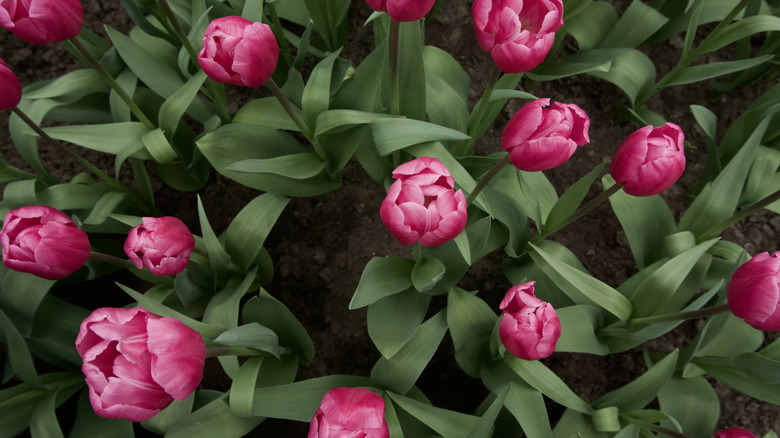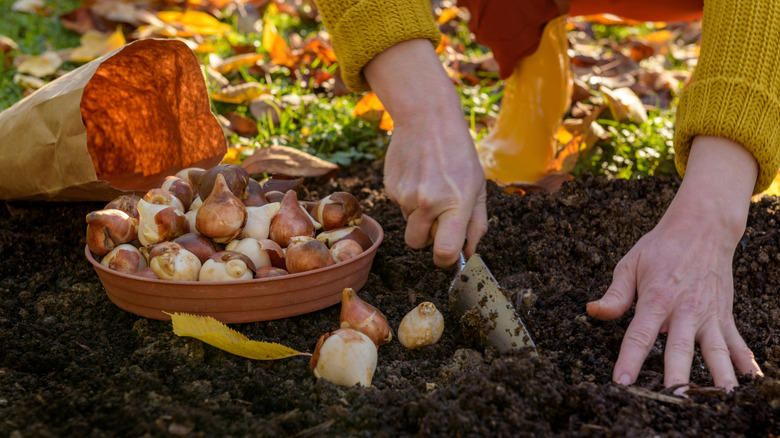Soil Tips To Help Tulip Flowers Thrive In The Garden
We may receive a commission on purchases made from links.
Tulips are a great flower for beginner gardeners because it takes very little work to help them flourish — as long as you avoid these mistakes everyone makes when growing tulips. However, these low-maintenance blooms still require the right conditions if you want them to thrive, including the proper soil. Good tulip soil will have a few qualities: it should have a loose composition, be able to quickly drain away water, and have a neutral pH balance.
Part of what makes tulips so easy to grow is that they don't require much water, and in fact can start to rot if they become too soggy. Soils with heavy clay contents can become saturated with water that will soak the tulips' roots. On the other hand, loose soil with plenty of drainage helps to ensure any moisture not needed by the flowers will be filtered away. Aim to plant your tulips in sandy loam soil or a loose potting mix. If you find that the dirt in your garden is too compact for tulips, you can decrease its density by mixing in compost or decomposed leaves to loosen up the soil's structure. To keep the tulips as dry as possible, you should try to plant them on raised beds so gravity can keep the soil drained.
Tulips need dry soil with a neutral pH level
Like many other flowers, tulips require soil with a neutral pH balance of about 6.0 to 7.0. This is because if the soil is more acidic or more alkaline, the flowers won't be able to absorb some of the vital nutrients present in the soil. It's important to test the pH of your garden's soil before you plant anything; luckily, a tool like this SONKIR Soil pH Tester Kit from Amazon makes the process easy. Or, you can get your hands a bit dirty by learning how to check the soil's pH balance by yourself.
If your soil's pH is off, you can take steps to adjust it as long as the soil is at least 55 degrees Fahrenheit. To reduce the pH balance, you'll need to make it more acidic by adding materials like elemental sulfur. You can do this by adding compost to the soil, which naturally releases sulfur, or by tilling the dirt with a garden-safe product like True Organic's Prilled Sulfur. Alternatively, you can raise the soil's pH and make it more basic by incorporating lime into the dirt. Lime will decrease the soil's acidity, as well as add some nutrients.
Changing soil's pH balance can take months, so be patient and be sure to begin the process well ahead of when you want to start growing flowers. Before you do, go ahead and check out everything else you need to know about planting tulips.

